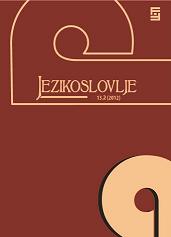Multilingualism of Edirne during the 19th century in the Ottoman era
Multilingualism of Edirne during the 19th century in the Ottoman era
Author(s): Fahri TürkSubject(s): Language and Literature Studies
Published by: Filozofski fakultet, Sveučilište Josipa Jurja Strossmayera, Osijek
Keywords: Edirne; ethnic diversity; minority schools; 19th century; non-Muslims
Summary/Abstract: Every community had to use and teach its own language in the Ottoman time in Turkey. Especially in the cities such as Istanbul, Thessalonica and Edirne (Adrianopel) a lot of people lived in a linguistically diverse environment, Jews, Armenian, Greek and Bulgarian communities in due time opening their own schools. Especially Edirne profiled itself as a cosmopolitan city in this respect in the Ottoman time. Bulgarian and Polish people migrated to the district of Edirne for the first time in the 19th century and established twelve schools in Edirne. One of these schools was a catholic one, founded by the Polish Resurrectionists. The multi-ethnicity of Edirne had a huge impact on the linguistic diversity of the in-habitants of the city, which was caused by the Ottoman migration policy through-out the centuries. In the era of Suleyman the Magnificent a lot of handicraftsmen of Armenian origin were invited to Edirne in order to live in the city and strengthen its economy. A number of Jews came to Edirne after their exodus from Spain and Portugal in 1492 and 1495. This paper explores the effects of multilingualism on the economic and social life of Edirne in the 19th century.
Journal: Jezikoslovlje
- Issue Year: XIII/2012
- Issue No: 2
- Page Range: 439-445
- Page Count: 7
- Language: English

